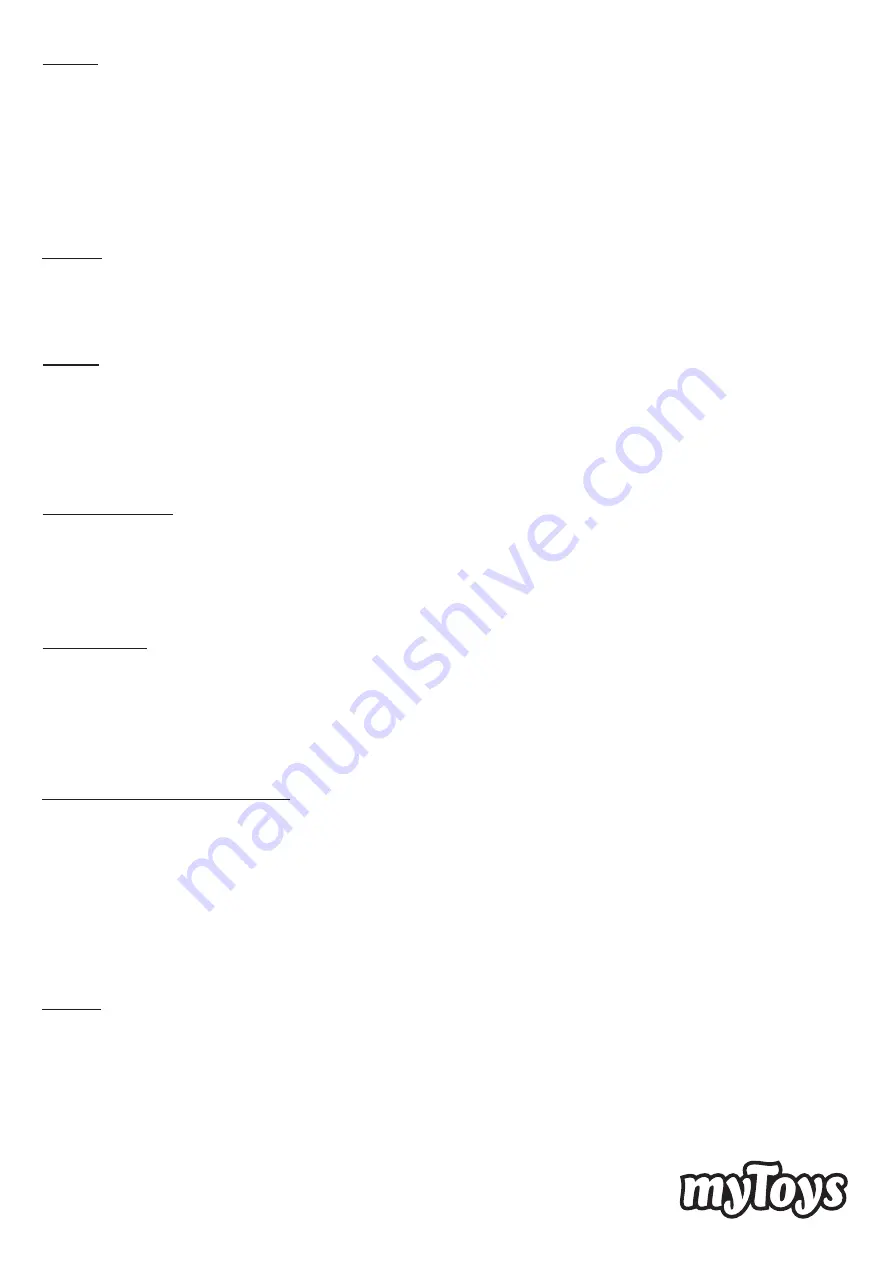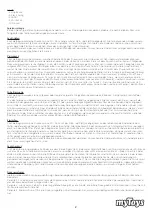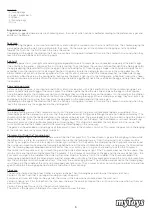
3
Content:
- 4 jumping bags
- 4 eggs, 2pieces each
- 4 spoons
- 4 throwing bags
- 10 tins
Suggested games
The games suggested here are classic children’s games, the rules of which can be modified according to the preferences, ages and
abilities of the players.
Sack race
Before starting the game, a course of around 10-15 meters in length is marked out with a start and finish line. The children playing the
game gather behind the start line and climb into their sacks. On the word ‘go’, all the children start hopping as fast as possible
towards the finish line: the first to reach the line is the winner.
Depending on the age of the children, the finish line can be a turning point instead: in this case, the children turn around when they
reach the line and hop back to the starting point.
Egg hunt
Before the game starts, small gifts or separately packed goodies (sweets, for example) are concealed inside one of the plastic eggs.
One child from the group is chosen as the first to start hunting. The child leaves the room while the other kids find a hiding place for
the egg (adapting the level of difficulty to the age of the child looking for it). Once the egg is hidden, the child who will look for it is
called back into the room to start searching. When he or she gets close to the hiding place or moves in the wrong direction, the
other children call out instructions as appropriate. They might call out ‘warmer’ when the child approaches the hidden plastic egg,
and ‘colder’ when they are on the wrong track; ‘hot’ means the player is right next to the hiding place, while ‘cold’ means they need
to look somewhere else entirely. When the child hunting the plastic egg finally finds it, they can open the egg and help themselves to
the contents.
Egg-and-spoon race
Before starting the game, a course of around 10-15 meters is marked out with a start and finish line. All the children taking part are
given a spoon and a plastic egg of the same colour. The children gather behind the start line and place the eggs on their spoons.
Once the game begins, the children may not touch the eggs: they must balance them on the spoons. On the word ‘go’, the children
set off as fast as they can, trying to reach the finish line without dropping their eggs. When a child drops an egg, they must pick it up
and go back to the starting line; then they place the egg back on the spoon and start the race again.
Depending on the age of the children, the finish line can be a turning point instead: in this case, the children turn around when they
reach the line and carry their eggs back to the starting point.
Dance-and-seek
To prepare for the game, all the children are sent out of the area in which the game will take place (indoors or outdoors). Four
throwing bags are then placed in such a way that they are not obvious at first glance (although they are not hidden completely). The
children come back into the space and stand in the middle of the play area. The game leader turns the music on, and all the children
dance to the tune. When the music suddenly stops, the game leader calls out the object that the children must now find and bring
forward as quickly as they can (for example, ‘green throwing bag’). The child who completes the task fastest wins the round. The
music continues and the children look for the remaining throwing bags in the same way.
The game can be extended by including any of the colourful items in the children’s Party Set. This makes the game more challenging
as the kids now have many more things to look for.
Plumpsack (or ‘Drop the Throwing bag’)
Before the game begins, the children decide who will be the Plumpsack first. The one chosen is given a throwing bag to hold while
the others form a circle, facing inwards. The children then recite the following rhyme: “Don’t turn around, the Plumpsack will be
found. If you laugh out loud or turn, a slap on the back you will earn!” As they do so, the child playing the Plumpsack moves around
the circle and surreptitiously drops the throwing bag behind one of the other children before quickly running away. If a child notices
that the throwing bag was dropped behind him or her, they must quickly pick it up, give chase and try to catch the Plumpsack.
Meanwhile the Plumpsack must try to reach the gap in the circle before being caught; if the Plumpsack reaches the free space, they
join the circle and the other child become the Plumpsack. If the Plumpsack cannot reach the gap and the chaser catches them, the
Plumpsack must go in the middle of the circle (until another child has to take a turn in the middle). If the Plumpsack drops the
throwing bag behind one of the other players and that player does not notice, the Plumpsack goes around the circle one more time,
taps the other player on the shoulder and says, “One, two, three, rotten egg for tea!” The child who did not notice the throwing bag
must then go in the middle of the circle until somebody else takes over. The Plumpsack carries on moving around the circle and tries
again to drop the throwing bag behind another child without them noticing.
Tin game
The cans are stacked on top of each other in a pyramid shape. Then throwing bags are thrown at the pyramid of cans.
Version 1: For each can that is no longer standing, you get one point.
Everyone can throw all 3 bags on the pyramid. The winner is the one who has knocked over the most cans.
Version 2: like variant 1, but for each can that falls over, there are the points printed on the can. Winner is the one who has the most
points after 3 throws.
Version 3: everyone throws until all the cans have fallen over.
The winner is the player with the lowest number of throws to clear the cans.




